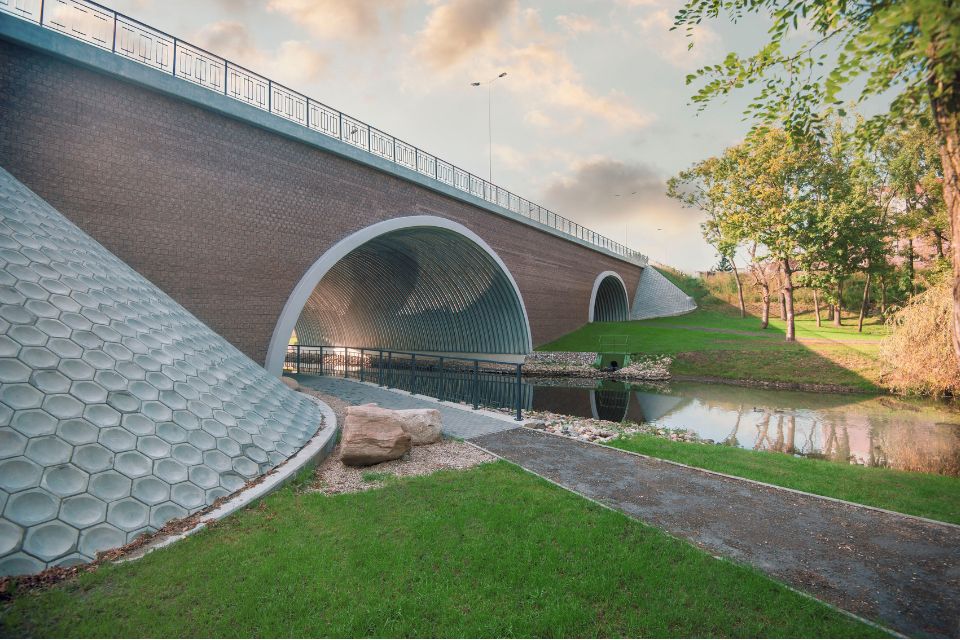Net zero emissions are the goal driving climate policy around the world, but the commitments that governments have made to achieving net zero by 2050 are not being met. The ambition to be net zero by 2050 (or sooner) has been the widely agreed-upon standard seen as essential to limiting global warming to 1.5°C above pre-industrial levels, in line with the Paris Agreement.
Governments, industries, and corporations have declared their commitment to net zero targets, but barriers to change and major challenges remain, particularly in industries perceived as high-emission sectors, such as infrastructure and civil engineering. These sectors will play a pivotal role in achieving net zero goals, and there are ways that focusing on infrastructure and civil engineering can help drive large-scale net zero compliance.
Why are net zero targets are not being met? How can barriers within infrastructure and civil engineering in particular be overcome to move toward a more sustainable future?
Infrastructure and civil engineering as key to achieving net zero
Infrastructure and civil engineering are at the heart of modern societies. Design, construction, and maintenance of essential systems like transportation, energy, water, and waste management as well as the foundations underpinning these, such as bridges and roadways, stormwater management and geotechnical solutions. And while the infrastructure sector and the common materials it makes use of in construction can be significant contributors to global carbon emissions, future-oriented civil engineering is driven by environmental considerations and a reduction in the carbon footprint. While it will take time, the industry itself knows that time is of the essence and is examining everything from reduced-carbon-footprint steel to cleaner extraction and transportation of raw materials, better production methods for faster, less disruptive and longer-lasting solutions, and renewable energy – as a start.
And as major civil engineering projects often span multiple years or even decades, it’s incumbent on organizations building in this sector to consider the long-lasting environmental impacts of what is being built. Ultimately it is this far-reaching, long-term outlook that demands environmental leadership from civil engineering and infrastructure companies, as the long-term view is critical to meeting global climate goals.
Why net zero targets are falling short
Despite commitments, several key obstacles prevent net zero targets from being met, particularly in infrastructure and civil engineering:
1. Slow adoption of sustainable technologies despite new reporting requirements
For many in the civil engineering/infrastructure sector, budgetary considerations are short term and regulation has not mandated that sustainability be factored into project budgets. While many technologies, innovations and approaches exist that can contribute to emissions reductions, adoption is slow depending on geography.
In the European Union, where corporate sustainability reporting requirements (CSRD) are changing to require most companies to report on the risks and opportunities arising from social and environmental issues, and on the impact of their activities on people and the environment, adoption of sustainability technologies and solutions that make reporting easier and more transparent is picking up. And it will require some regulatory pushes for other parts of the world to follow suit.
2. Inadequate policy and regulatory support
Regulatory frameworks are a big part of what may prompt governments and corporations to move on climate goals. Despite ambitious targets, the regulatory frameworks and incentives needed to support net zero goals are often insufficient or inconsistent. In some regions, carbon pricing mechanisms like carbon taxes or emissions trading systems are not strong enough to drive meaningful reductions.
Moreover, the regulatory standards for green building and infrastructure development are frequently outdated or too weak to make a substantial difference. Policies mandating the use of sustainable materials, energy-efficient designs, or lifecycle carbon assessments are either absent or poorly enforced.
This regulatory lag means that there is no cohesive policy that guides how to reach net zero.
3. High upfront capital costs
Transitioning to net zero infrastructure requires significant upfront investment in sustainable technologies and retrofitting existing structures. While these investments often pay off in the long term through energy savings, reduced maintenance costs, and the longer lifespan of the final product, the short-term financial burden can be overwhelming. For instance, the use of reduced carbon footprint steel has been limited in large part because it is more expensive, and the industries relying on steel production are frequently slow to innovate. The higher upfront material costs may be seen as financially risky in the short term. Standard environmental product declarations (EPDs) and a clear understanding of specific environmental impacts may help mitigate some of the resistance to change and upfront costs, while green bonds and sustainable finance mechanisms coupled with net zero-targeted financing solutions may incentivize the change needed to meet global net zero targets.
4. The need to take advantage of retrofitting opportunities in existing infrastructure
Much of the world’s infrastructure was built decades ago, long before climate change became a real concern. Retrofitting existing infrastructure to be energy-efficient and low-carbon is more difficult and expensive than building new, sustainable structures. In many cases, aging infrastructure is ill-suited for retrofitting due to design limitations or a lack of available space for upgrades.
In addition, the civil engineering sector faces challenges related to the disruption caused by large-scale retrofitting projects. Roads, bridges, and public transportation systems are critical to daily life, and upgrading them requires careful planning to minimize impacts on communities and the economy. There are many existing (and frequently used) solutions deployed in the world, such as lifespan-extending culvert relining solutions that can extend the lifespan of vital infrastructure and preserve road safety without disruption to traffic.
How net zero targets can still be met
While the obstacles are significant, they are not insurmountable. With the right strategies, the infrastructure and civil engineering sectors can make meaningful progress toward net zero. Key solutions include:
1. Innovation and the adopting sustainable practices and materials
Accelerating the adoption of low-carbon materials and construction techniques is essential. Research and development in sustainable technologies must be a priority. Incentivizing the use of low-carbon materials like recycled or low-carbon-footprint steel, or alternative materials is one way to emphasize sustainable practices and materials. Digital transformation will also be a big part of shifting toward more efficient and sustainable models of construction and infrastructure.
2. Stronger regulations, demand for compliance and commitments to “self-policing”
Implementing and enforcing regulations that mandate sustainable practices is step one in making infrastructure a key component of net zero activity. Legislation should require all new infrastructure projects to meet specific energy efficiency and emissions standards.
Regulatory frameworks should also encourage or mandate the use of lifecycle carbon assessments, which evaluate the total emissions of a project from start to finish. This will help ensure that decisions made during the planning phase prioritize long-term sustainability over short-term gains.
Companies can also “self-police” how they reduce their greenhouse gas emissions through various collaborative initiatives, such as setting science based targets and having these validated by a body like the Science Based Targets Initiative.
3. Increased financing for net zero projects
Financial support needs to be scaled up to support investment in sustainable infrastructure. Green bonds, climate funds, and public-private partnerships can provide the capital needed to support large-scale projects and the construction of new net zero infrastructure.
4. Focus on sustainable, smart urban planning
Cities are at the forefront of the global net zero challenge. Urban infrastructure, including buildings, transportation, and utilities, must meet sustainability standards.
Sustainable urban planning is also crucial. Cities should invest in public transportation, green spaces, and renewable energy solutions that reduce emissions as well as mitigation solutions that help to prevent massive flooding and similar disasters when the ravages of climate change create untenable crisis situations within urban environments.
Net zero is possible
Achieving net zero emissions by 2050 is a mounting challenge, which sometimes seems further away than ever – but it remains possible. Through the adoption of sustainable technologies, stronger policies, increased financing, and a focus on true and verifiable sustainability, infrastructure and civil engineering can lead the way to a zero-carbon future.


Great info. Lucky me I discovered your blog by accident (stumbleupon).
I’ve saved as a favorite for later!